

Blog
Our accessibility consultants are constantly on the lookout for new products that will make it easier for our clients to comply with accessibility criteria.
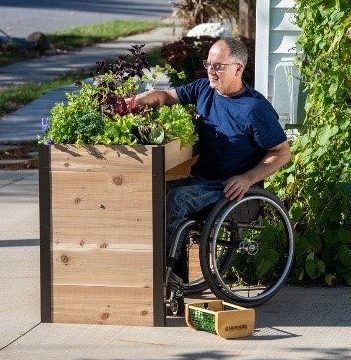
Our accessibility consultants are constantly on the lookout for new products that will make it easier for our clients to comply with accessibility criteria while meeting their overarching design goals. As manufacturers become more familiar with accessibility requirements under applicable federal, state, and local regulations and building codes, new or modified products continue to emerge, making compliance simpler and more stylish.
Here are just a few examples of accessible products that we have been recommending…
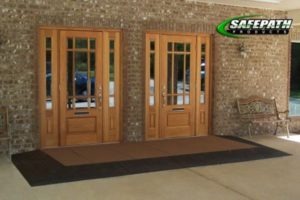
One of the most common issues we see in remediation projects, especially as a result of litigation, is a non-compliant level change at exterior doors. Very often, a step up of more than ½ inch is provided from the exterior to the interior surface, resulting in a barrier to access for a person who uses a wheelchair or other mobility device. SafePath provides a range of customizable ramps and reducers to help overcome vertical barriers to access at interior or exterior conditions. One of the product lines we have frequently recommended is their EntryLevel™ Landings. The product provides a compliant ramped transition (1:12 max) along with a level landing (1:48 max slope in any direction) to accommodate the required maneuvering clearance at doors. Because the landings are fixed in place and easy to customize, they provide a great option for clients looking to create an accessible building entrance.
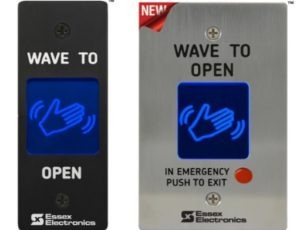
As we continue to deal with the changes brought about by COVID-19, we are seeing more clients looking to provide touchless controls in workplaces, schools, healthcare facilities, and even residential buildings. Automatic doors have always been a recommended option to provide a greater level of access for people with disabilities, but the increased desire to create hygienic environments due to the pandemic has resulted in more of our clients choosing to go with touchless options. There are many options on the market, including the Essex Hand-E-Wave Activation Switch. The switch can be recessed or surface mounted, and its stainless steel surface is designed to be easy to clean. The sensor itself is intuitive to use, with both text instructions and a pictogram provided directly on the face of the device. This particular product also provides an audio and visual signal when motion is detected, which increases usability for users with visual, hearing, or cognitive disabilities.
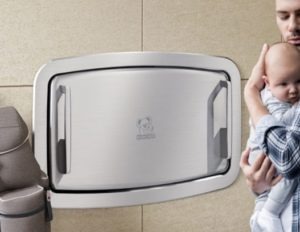
In our experience, baby changing stations are one of the most frequently overlooked accessible product specifications. Baby changing stations are an amenity provided to building occupants and as such are required to be accessible. This means that a baby changing station must have all operable parts within accessible reach range and comply with protruding object and work surface criteria. To accommodate the required knee and toe clearance below an accessible work surface, the station must extend at least 17 inches from the wall in the down position. Many recessed changing station models currently on the market cannot satisfy this requirement. Recently, Koala Kare released a new model specifically to address this concern. This model is recessed to comply with protruding object criteria, meets all dimensional requirements in both the up and down position, and is equipped with handles running the length of both sides of the station to provide increased usability.
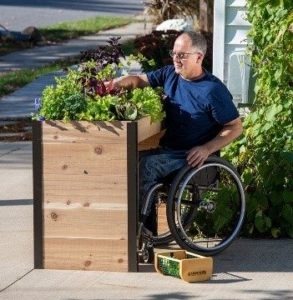
At Steven Winter Associates, we work on a large number of senior housing projects. Many of our clients are consistently looking for ways to help enable their residents to live a healthy and fulfilling life and providing a variety of outdoor amenities is a popular way of achieving this goal. Elevated gardens are a great option for residents with back or knee problems and this model from Gardner’s Supply Company easily accommodates someone who uses a wheelchair without compromising the variety of plants the garden can accommodate. The garden bed accommodates knee and toe clearance by providing a reduced depth front planting area designed for herbs or other plants with shallow root systems while the deeper planting area at the back of the bed accommodates larger plants. The 24-inch reach depth allows all portions of the bed to remain within reach range, ensuring that users have equal access to the enjoyment that gardening can provide.

This last product line is not something that we see specified by clients, but we thought it was worth spotlighting because of the ingenuity of the product design process. As part of IKEA’s goal to “create a better everyday life for as many people as possible,” they partnered with nonprofits Milbat and Access Israel to create adaptive solutions for their furniture pieces that could better serve the needs of people with a range of disabilities. The result was the ThisAbles project, which generated a line of products to “bridge some of the gaps between existing IKEA products” and these special needs. Products in this line include a ring pull intended to attach to pillow zippers, a cane holder designed to attach to bed frames, and pull knobs and handles able to be used with an arm or side of the hand, among others. Anyone interested in these products can download a free file to print on any 3D printer.
Stay tuned for additional installments of our Innovations in Accessible Products blog series and follow us on Twitter for ongoing spotlights on accessibility and inclusive design.
Contributor: Theresa D’Andrea, Senior Accessibility Consultant
Peter Stratton